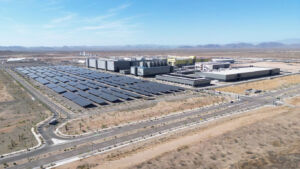In mid-November, President Biden signed the $1.2 trillion bipartisan infrastructure bill. The government appropriated $550 billion in new spending on transportation, water and power infrastructure, and pollution cleanup. Included in the Act is $110 billion of new investments in roads and bridges over the next five years. According to the White House, the $40 billion for bridge repair will be the largest bridge investment since the construction of the interstate highway system, which began in the 1950s. Although this is necessary and good news for our country’s aging infrastructure, unfortunately, we think it will have a limited impact on the economy for the following reasons:
READ ALSO: Why Arizona is recovering jobs lost during the pandemic faster than most
1. Tight labor market. Politicians have promised all kinds of new jobs with the infrastructure bill. There are estimates of nearly 100,000 new jobs per year over the next five years. But as of October, we have 11 million job openings and of those, 410,000 are construction jobs. If we had another 100,000 job openings each year in construction, it wouldn’t improve GDP. We don’t need more open positions; we need more people filling those positions. Skilled labor such as masons, heavy equipment operators, welders, etc. – people we need to build bridges and float concrete – are difficult to find. Unfortunately, many younger people don’t want these jobs.
A possible solution is to entice workers into specific trades by increasing wages, which in turn creates another challenge: inflation. As inflation heats up, interest rates will be on the rise, creating more challenges for economic expansion. The employment cost index is up 3.7% in the past year, increasing the fastest in 17 years.

2. Shovel-ready projects. There is no such thing as a shovel-ready project; we have seen this before. Even when money is available for a project, it will take time to draw up plans and secure contractors. There will be a positive impact on economic activity as projects get up and running, but that impact may be delayed until 2023 and beyond.
3. Supply constraints. The economy is already running up against capacity constraints and more demand will exacerbate the problem, increasing inflationary pressures, with muted economic activity. Getting inputs such as steel beams, nuts and bolts, etc., may take time, which, again pushes the economic benefits out to 2023 and beyond.
4. Repairing infrastructure versus expanding infrastructure. The Federal-Aid Highway Act of 1956 authorized the construction of 41,000 miles of connected interstate highways. This created jobs and expanded markets, allowing the efficient transport of goods and produce across the country and services, like Disney World, to be consumed by millions. Expanding our infrastructure versus repairing our infrastructure will have a very different long-term economic impact. The infrastructure investment in the 50s and 60s boosted economic activity. Repairing the infrastructure is very much needed, but it may not have a similar economic impact.
Build Back Better Act
The House of Representatives recently passed the $1.75 trillion Build Back Better Act, one of President Biden’s top agenda items. This bill offers spending on climate-related investment, universal pre-school, tax credits and funding for healthcare and housing. The bill has a long journey ahead, as it must pass the Senate and it more than likely will look different at the finish line.
Again, the impact on the economy more than likely will be limited. This is a 10-year plan. The fiscal multiplier simply put is the ratio of the change in output to a change in tax revenue or government spending. A number greater than 1 would suggest the fiscal stimulus is a good thing. Unfortunately, the expected multiplier of the Build Back Better bill is approximately 0.5. The government will spend $1 and the economy will get $0.50 of output.
Equity Markets
The stock market, being a leading indicator, can give us clues on future expectations. The market would agree with our conclusion that the infrastructure act is a positive to the economy but that it is not a catalyst driving significant economic growth.
President Biden announced the American Jobs Plan in March 2021 and at that time, the plan was significantly larger. Nevertheless, one would expect specific industries, such as construction and engineering, construction materials and building products, to outperform the broad market. That has been the case this year. From the beginning of the year to early December, the S&P 500 returned 27%. Construction and engineering, construction materials and building products gained 47%, 49% and 45%, respectively, significantly outperforming the broad market.
Conclusion
This is a non-event for the economy. Both acts can have a positive impact on the economy; however, one variable rarely drives economic activity. Some of the benefits of the acts may be mitigated by other counter-acting variables, such as supply constraints and inflation. It may boost future earnings for some stocks in specific industries, but much of that news has been baked in the cake as we previously mentioned. These acts provide capital for projects over the next 10 years and will provide support to longer-term GDP growth.
We expect real GDP to be 3.5% in 2022, then naturally slow to 2.5% in the following years. Without these acts, GDP would be slightly lower.
KC Mathews is chief investment officer with UMB Bank.




